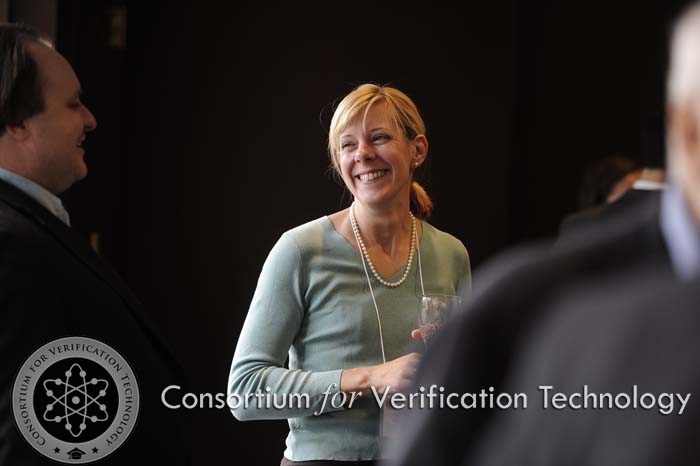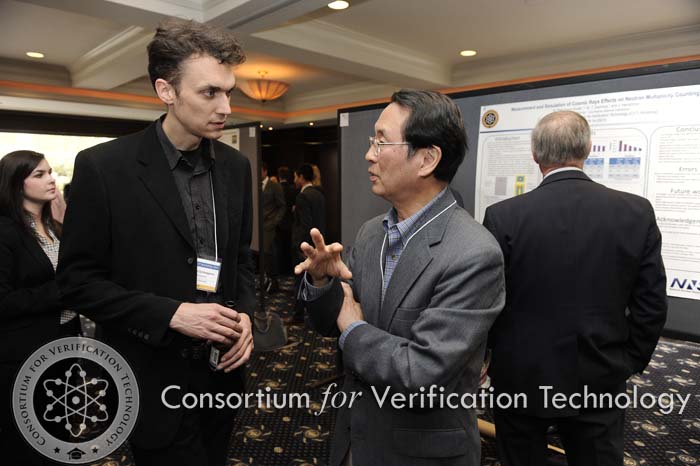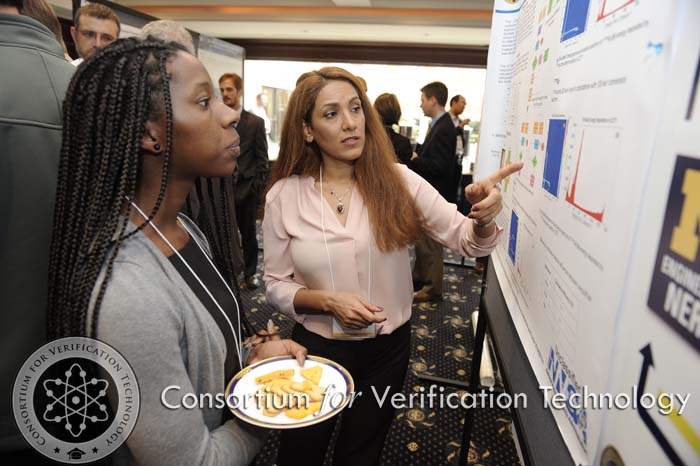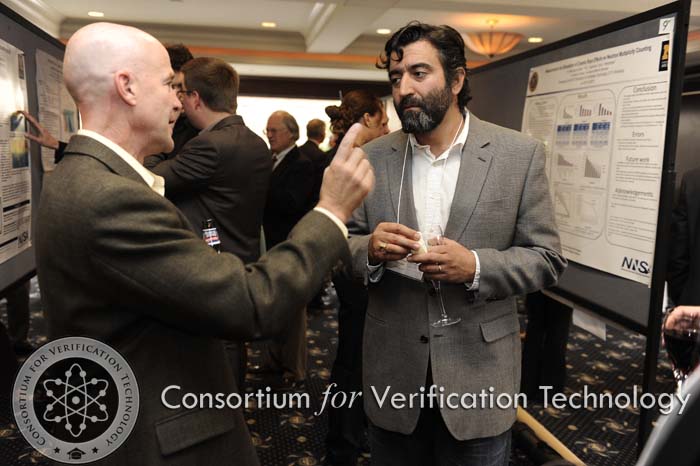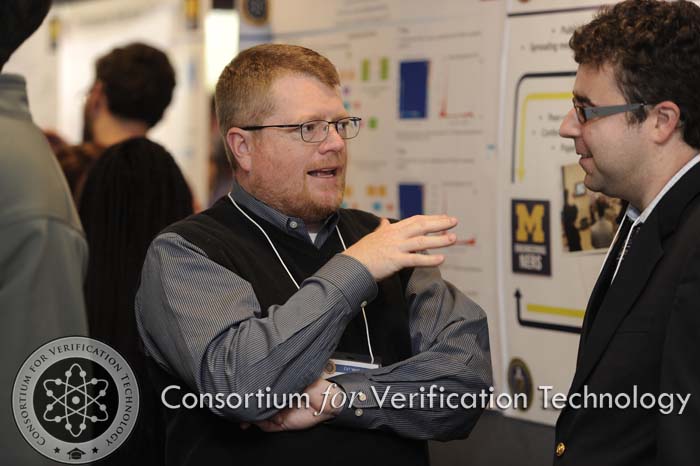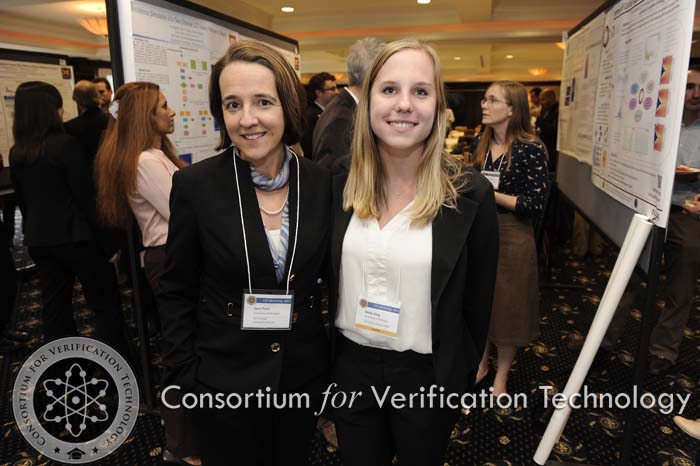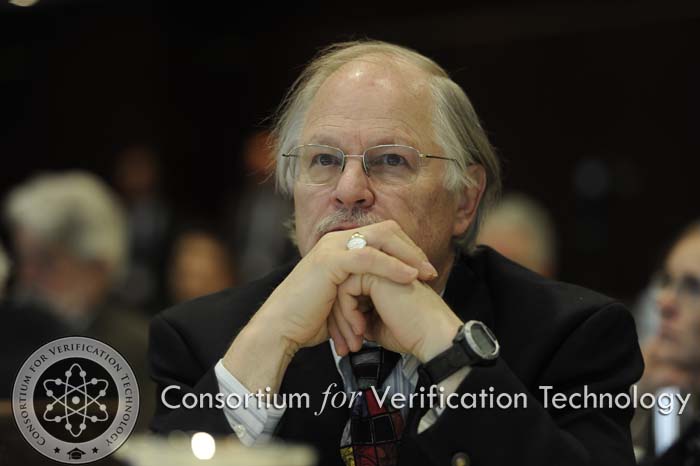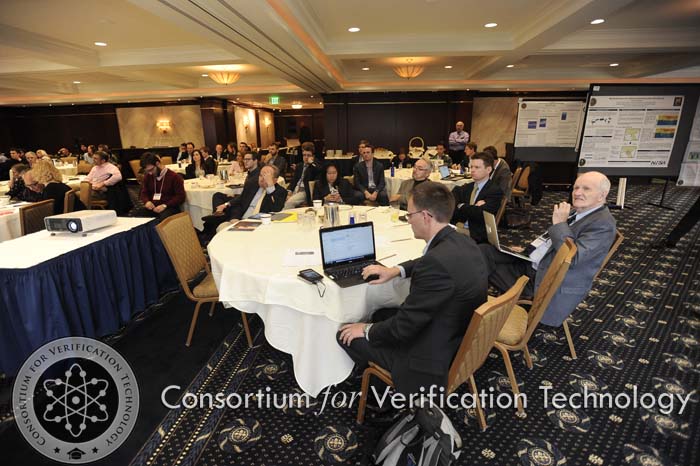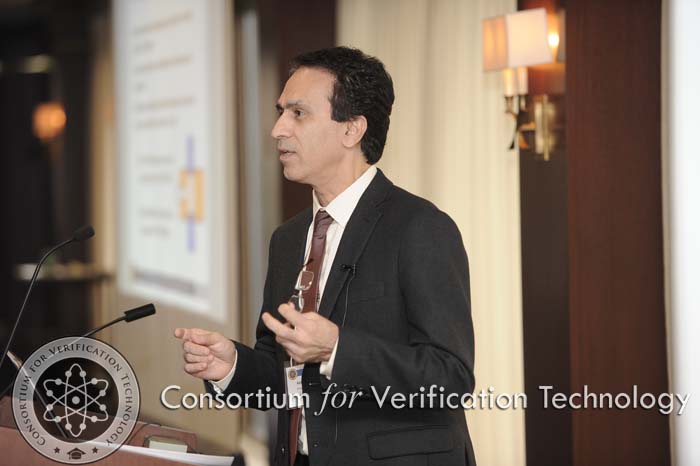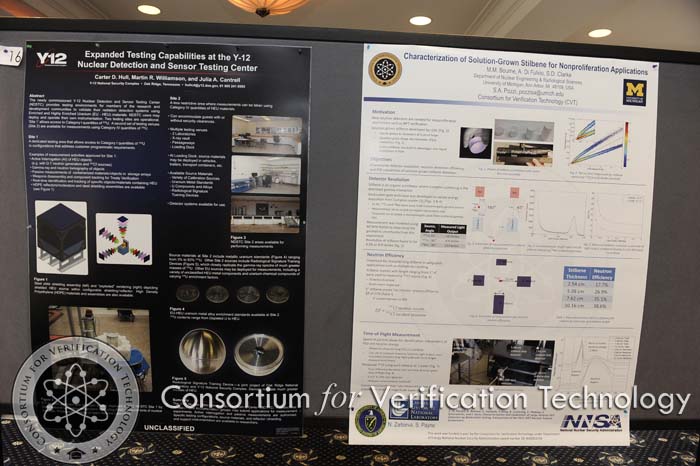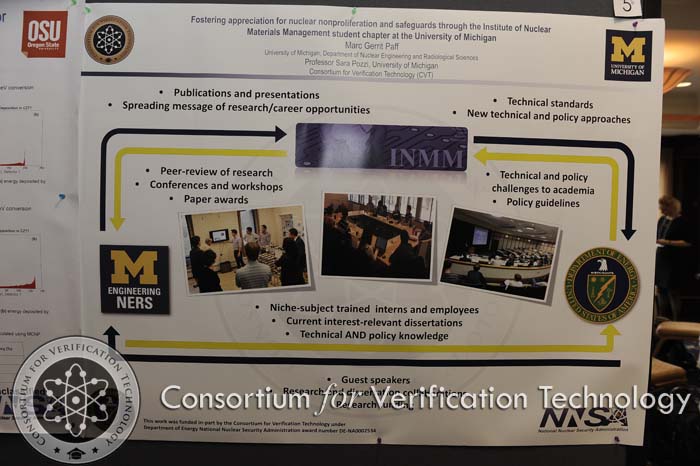
A two day conference held October 15-16th marked the end of the first year of the Consortium for Verification Technology, a project comprised of 13 universities and nine national labs tasked with analyzing nuclear nonproliferation efforts and improvements in nuclear monitoring and detection technologies.
The group gathered at the Campus Inn in Ann Arbor and over the course of two days were brought up to speed on what participants in the consortium’s six “thrust” areas had accomplished over the past year. Using data gathered from the treaty verification team, all other areas of the consortium’s interests were informed of the gaps and challenges current legislation concerning nuclear nonproliferation and methods of detection present, and significant improvements were made.
At the end of year one, the CVT has begun a coordinated effort to address gaps and challenges presented in three technical areas. Advanced safeguards tools for accessible facilities, tools for detecting undeclared activities and facilities, and disarmament verification. Through the lens of those areas of interest the CVT aims to solve such issues as: determining the location and specifications of fissile materials, detecting small-yield nuclear explosions anywhere on Earth, as well as verifying whether what they’re monitoring is indeed a nuclear warhead. All of this without revealing any classified information.
By the end of the five-year project, the CVT expects to have made significant strides in each branch of their mission. A very deep understanding of the policies and the technical aspects of nuclear treaty verification, next generation technical computation capabilities, new and improved measurement techniques, and 80 students trained in these areas at the bachelor’s, master’s, and PhD level are among their goals.
Click here to view the online Agenda and Presentations





